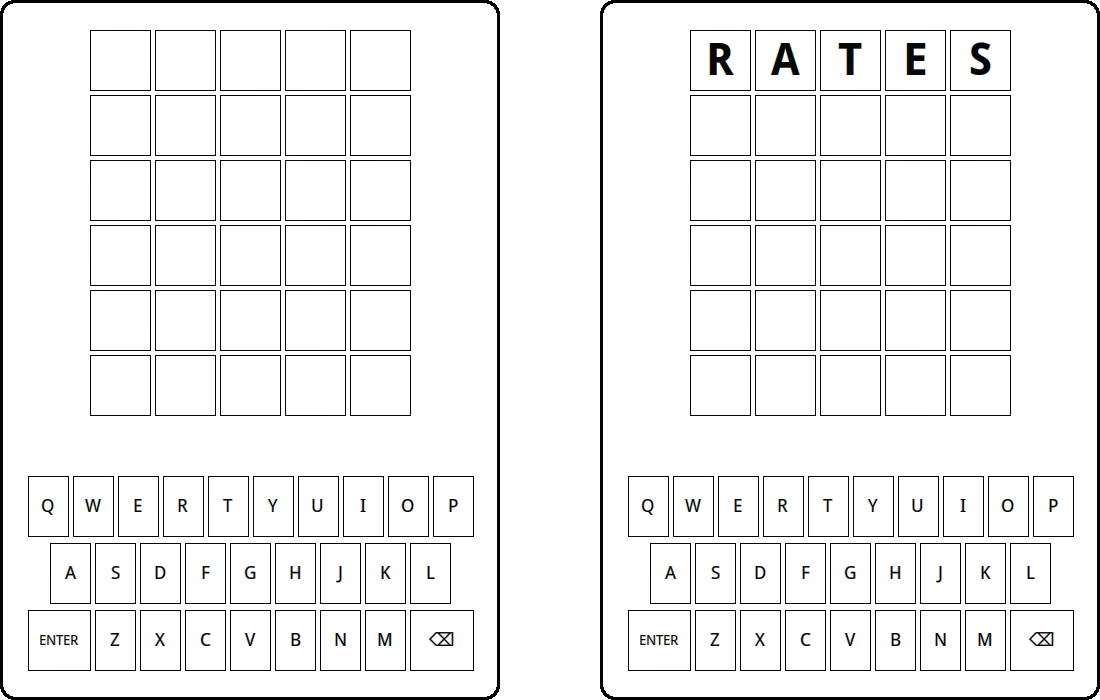The Starting Template
Fortunately, you don’t have to implement the Wordle project entirely from scratch. The starting repository already includes the following files:
| File name | Description |
|---|---|
Wordle.py |
The starter file for the project, which uses the WordleGraphics module to display the board. This is the file that you will be editing. |
WordleGraphics.py |
This module exports the WordleGWindow object type, which is responsible for managing the graphics, along with several useful constants. Unless adding some extensions, you will not need to touch this file. |
english.py |
This module exports the constant ENGLISH_WORDS, and a function is_english_word(s) that checks whether s is a valid English word. It is important to note that all the ENGLISH_WORDS are lowercase! You will not need to edit this file. |
Note that unless you are implementing extensions, the only file you will need to change is Wordle.py, which imports the resources it needs from the other modules already. The starting version of Wordle.py is included in the starting resources, but is included here in Figure 1 for reference.
#################################################################
# Name:
# Collaborators (if any):
# Generative AI transcript link (if any):
# Estimated time spent (hr):
# Description of any added extensions:
#################################################################
from WordleGraphics import WordleGWindow, N_ROWS, N_COLS
from english import ENGLISH_WORDS, is_english_word
from WordleGraphics import CORRECT_COLOR, PRESENT_COLOR, MISSING_COLOR, UNKNOWN_COLOR
import random
def wordle():
""" The main function to play the Wordle game. """
def enter_action():
""" What should happen when the RETURN or ENTER key is pressed. """
gw.show_message("You need to implement this method")
gw = WordleGWindow()
gw.add_enter_listener(enter_action)
# Startup boilerplate
if __name__ == "__main__":
wordle()Wordle.py. Of particular importance is line 21, where an instance of the WordleGWindow data type is stored in the variable gw. This is the variable you will use throughout the rest of the program when wanting to interact with the WordleGWindow.
When you download the initial repository, a lot of the code is already written and ready to go, because we have implemented the graphics for you. Running the initial version of Wordle.py creates a window, draws the letter boxes, and creates the keyboard at the bottom of the window. You can even type letters either by hitting keys on the keyboard or clicking the key on the screen, just as you can when you are playing the online version. Figure 2 shows both the initial screen and the screen you get after typing in the five letters of the useful starting word RATES, which includes five of the most common letters.
RATES (right).
Unfortunately, that is all the program does at the moment. It doesn’t actually let you play the Wordle game. That’s your job! But first, it is worth spending a bit of time reviewing the rules of Wordle, in case you’ve somehow managed to miss the craze.
